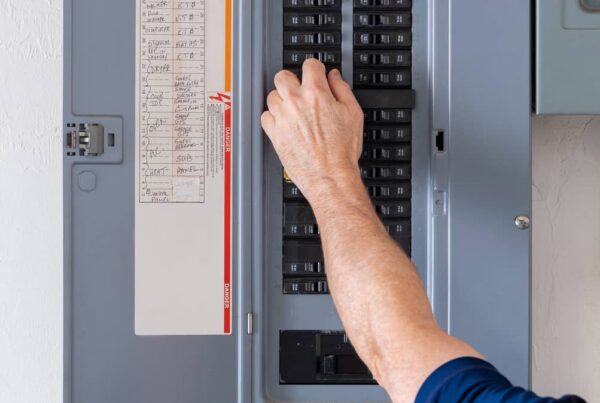
People who have asthma or other breathing issues will often utilize a humidifier device. Consider a cold dry night at home has caused you a restless sleep. The next day, you realize that a humidifier might be a great purchase. You go out and purchase a humidifier to put some moisture into the air while you sleep, which helps your breathing. After about a week, you start to smell a musty scent in your room.
Can a humidifier cause mold? Yes, a humidifier can cause mold because of the lack of cleaning, and the moisture levels are too high in your home. You immediately check your water basin that connects to the humidifier. Low and behold, there are some black marks that appear to be mold or mildew collecting.
Let’s take a look at humidifiers and their effect in the home.
What is a Humidifier
The classic humidifier is a simple device that turns water into a vapor or steam in order to increase the moisture levels in your homes air. People will often use them in a specific room, usually their bedroom. This aids in sleeping habits during a dry night of air in the home.

Various Types Of Humidifiers
If you go shopping for a humidifier at any store that specializes in these products, you will notice a variety of humidifiers are offered. Let’s take a look at what those are.
Central Humidifiers
Built into your HVAC system and are designed to provide the whole house with extra humidity.
Steam Vaporizers
This vaporizer utilizes electricity to create steam that will cool before it leaves the machine. This machine may cause burns so it is important to keep away from small children.
Impeller Humidifiers
These will use a rotating disk to create a cool mist that goes into the air.
Evaporators
Utilize a fan that will blow the air through a filter, belt, or wet wick
Ultrasonic Humidifiers
These use vibration to produce a cool mist

How Effective Is A Humidifier
Humidifiers are very effective at putting moisture into your home, but you do need to monitor the output of your humidifier as well. Should you purchase a portable unit, you will easily know when to use the humidifier- when the air is really dry.
The Best Way To Clean A Humidifier
Luckily, there aren’t many parts and pieces to the humidifier. Simply cleaning and drying the parts of the humidifier is highly suggested. You might also look to replace a filter if you have that type of humidifier. Simple soap and water will suffice when cleaning the humidifier parts. Storing your humidifier in a dry location after use is also recommended to avoid mold and mildew spore growth.

Can A Humidifier Cause Mold
Well, unfortunately, the short answer is yes! Yes, a humidifier can cause mold in your home. The reasons for this are very simple. Humidifiers release moisture into the air and mold thrives in wet/damp situations. So, proper maintenance is key to keeping this from happening.
The best way to combat the possibility of mold growth is simple. Clean the humidifier and maintain low moisture levels in the home. You can purchase a digital hygrometer that will monitor the levels of moisture. Lastly, it is best to keep the levels between 30% and 50%.
Here we will take a look at a video on how to keep your humidifier from growing mold.
Other Things That May Cause High Humidity and How to Fix It
Cooking – put a lid on the pots and this will lower the humidity
Closing doors in a home – leave the doors open in the interior of the home so the air can flow
Drying clothes on a clothes rack – dry clothes outside or in a dryer. Many of us like to hang the clothes to dry but inside the home, the moisture builds.
Cold weather pipes– insulate the pipes in the winter (in colder states) and this will help to keep the moisture away

How to Keep Humidity Lower in the Home and Avoid Mold Growth
Invest in a gas or electric furnace -The air that comes from a furnace and HVAC system has dry heat and lowers the moisture in the home. However, you do want to keep a lookout for moisture on the walls as this can also signal that there is a carbon monoxide leak.
Use caulking and weatherstripping – caulking and weatherstripping can wear out so make a habit of checking near doors and windows to see if there is air escaping or coming into the home.
Bathroom exhaust fans – these are essential in bathrooms as they draw the moisture out of the room and to the outside.
Turn it on for 10-15 minutes after a shower to allow the room to dry out and keep black mold from growing in the bathroom and on the silicone.
Lastly, make sure the air conditioner in the home is set to the “auto” setting. This will allow the moisture to be pulled out of the home and is especially important here in the South since our humidity is higher than in other states.
When To Call a Professional
Call a professional if the humidity levels don’t lower when using a humidifier. There may be other issues going on in the home that a professional may need to look into such as the ones that are listed above.
Conclusion
Understanding how to utilize a humidifier is key to keeping mold and mildew from forming in your home is vital to your health. Deciding which one to purchase for your home is the most important decision. If you aren’t sure what makes the most sense for your location, it is best to call Waypoint Home Inspectors for a home inspection.
You might need a full in-home unit or just a simple purchase of a portable unit could make sense. Call Waypoint Property Inspection to inspect your home in Tampa, St. Petersburg, Lakeland, Orlando, Palm Beach, Ft. Lauderdale, and surrounding areas.



